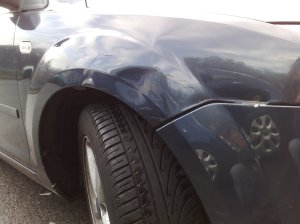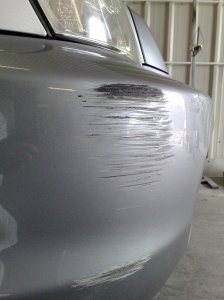How to Keep Your Car on the Road
We explain the basic
maintenance checks that will help to cut the cost of running your car.
 If you, like many
others, are resisting the urge to splash out on a new car in your efforts to
save money, it’s never been more important to make sure that your current set
of wheels are well looked after. Basic car maintenance is a must; particularly
if your car isn’t protected by a manufacturer’s warranty as breakdowns can be
hugely expensive and always seem to happen when you can least afford it.
If you, like many
others, are resisting the urge to splash out on a new car in your efforts to
save money, it’s never been more important to make sure that your current set
of wheels are well looked after. Basic car maintenance is a must; particularly
if your car isn’t protected by a manufacturer’s warranty as breakdowns can be
hugely expensive and always seem to happen when you can least afford it.
Taking good care of
your car is an easy way to prolong its driving life and cut costs. All it takes
is a few minutes every week or so to carry out the checks that will help to
keep your car in tip top driving condition. We explain how:
Regularly checking
your car's tyre pressure and keeping all 4 tyres correctly inflated will go a
long way in cutting fuel consumption, reducing wear and tear and making your
car safer on the road.
You car's optimum
tire pressure (psi) should be detailed either in your handbook or in a
'convenient place' such as on the side of one of your doors.
It's always best to
check your tyre pressure when your tyres are cold as the reading will be far
more accurate and you'll avoid the risk of over-inflation. For this reason it
can be a good idea to invest in a manual tyre pressure gauge and a foot pump
and do it at home rather than driving your car to your nearest garage.
You will also need to
check the depth of the tread on your tyres as this is subject to a legal
minimum. The law states that the tread on your tyres should be at least 1.6mm
deep across the central three quarter breadth and around the entire
circumference of each, although a depth of at least 3mm is generally
recommended for optimum grip.
You should also check
for any bulges, cracks, cuts, or foreign objects stuck in your tyre.
Keeping your car’s
oil levels topped up is a must if you want to keep it running at its best. If
you’re not familiar with how to check your oil levels you should look in your
car’s hand book to identify the dipstick, choose a time when your car’s engine
is cold, pull out the dipstick, wipe it and dip it back in the engine as far as
it will go. When you pull it back out you should be able to see whether
your car’s oil level sits comfortably between the ‘minimum’ and ‘maximum’
markers.
If there is too
little oil in your engine you should top it up with a suitable oil (you should
check your car’s handbook to find out which type of oil is suitable for your
car’s engine) – but be careful not to overfill though as this can do more harm
than good.
To extend the life of
your car’s engine it’s generally considered a good idea to have your oil
changed either once a year or every 10,000 miles. This can usually be done as
part of a service if you’re not sure how to do it yourself.
Checking that your
headlights, tail lights, brake lights, indicators, full beam and fog lights
work is vital. You should replace any bulbs as soon as you realise they have
blown (your instruction manual should explain how to do this) and it can be a
good idea to keep a spare set in the boot just in case.
Regularly checking
your brakes is a must for your own safety if nothing else. You can do this
while you're on the move simply by feeling and listening to how your brakes
respond when you want to slow down. If you notice any squeaking, your wheel
vibrates, or the car veers to one side when you apply the brakes it's a good
idea to get a specialist to take a look as leaving a brake-related problem
unchecked could compromise your safety and end up seriously damaging your car
and your bank balance.
Wiping your
windscreen wiper blades with a cloth dipped in white vinegar will help to keep
them in good condition and your windscreen sparkling and smear free. As soon as
they start to leave dirty marks or small scratches on your windscreen it's time
to change them. You should also make sure that your screenwash is topped
up with an appropriate solution so that you don't get caught short.
Your car battery
should last you at least 4 or 5 years but with a little bit of tlc you may be
able to extend this even further.
Try to remember to
switch off your car's electronic controls before stopping your engine as this
will allow the extra charge to run back into your battery and help to extend
its life. This includes lights, windscreen wipers, heaters, air conditioning,
heated seats, radios and cd players and any other electronic gadgets that are
powered by your car's battery. Also, if at all possible, store your car in a
garage when not in use. This is particularly beneficial during the winter
months as car batteries don't respond well to the cold.
Washing your car on a
regular basis will not only help it to look shiny and new (even if it's years
old) but will also prevent the build up of dirt, grime and potentially
corrosive winter salt, helping to protect both the bodywork and other essential
components from damage.
While getting your
car serviced on a regular basis does up the cost of running your vehicle,
ultimately it should save you money. This is because a well maintained car is
likely to cause you fewer problems and require far fewer expensive repairs as
it ages than one that has not had this attention.
You’re also likely to
find that when you come to sell your car you’re able to command a far higher
price (on both the private-sale and part-exchange markets) for a car with a
complete service history than a car with an incomplete log book.
Once any initial
warranty has expired you may find that you can cut the cost of a service
considerably by using an ‘approved repairer’ rather than an official dealership
so it’s worth ringing around to get some quotes.
It sounds obvious but
always check that you're using the right pump when you fill up at the petrol
station as getting it wrong can be a costly mistake.
If you do top up with the wrong fuel
then it's essential that you get help right away as your car will need to be
drained and assessed for damage. Trying to move, start or drive your car will
only exacerbate the damage and make the situation a lot worse so keep it where
it is until assistance arrives.
Call in the experts from Scuffs 'N' Scratches Car Body Repairs Liverpool to make sure your car is ready for the summer sun and tick one more thing off your checklist. We can make sure your car is in tip top condition from alloy wheel repairs, dent repairs, paint repairs, car paintwork repairs.
Call Joe 0151 909 3456 to check your car body needs today!


